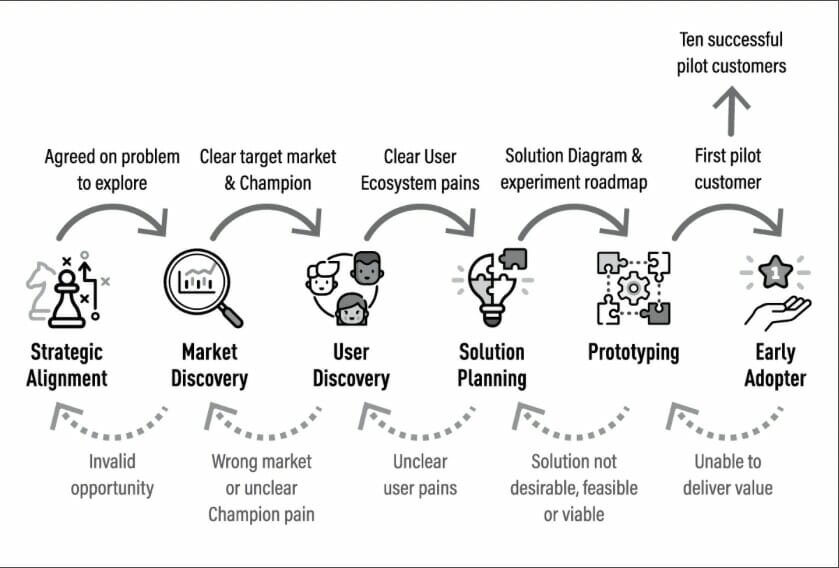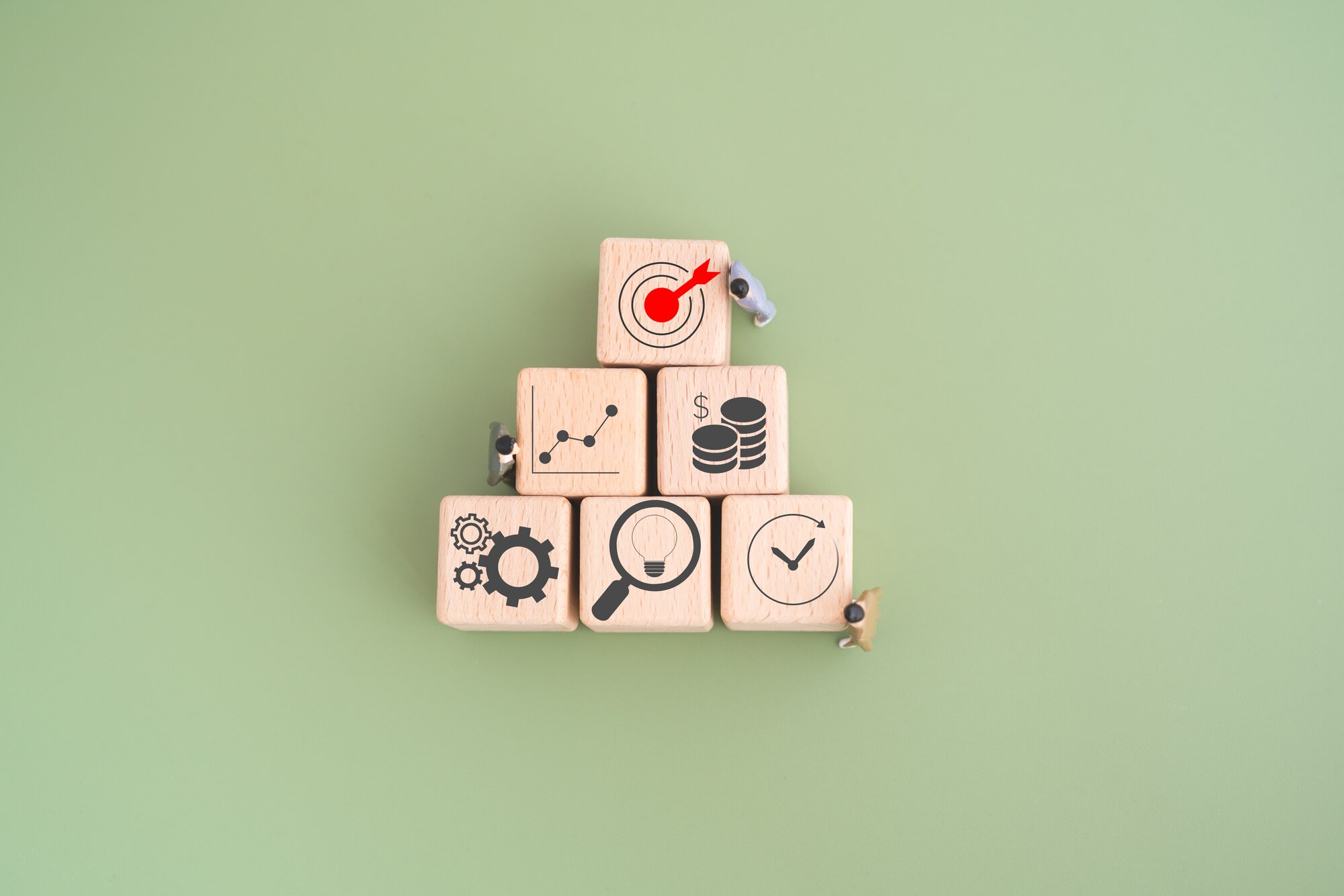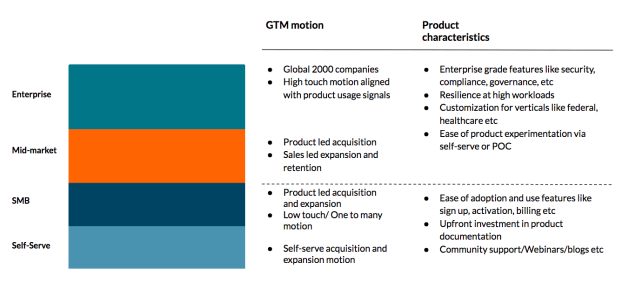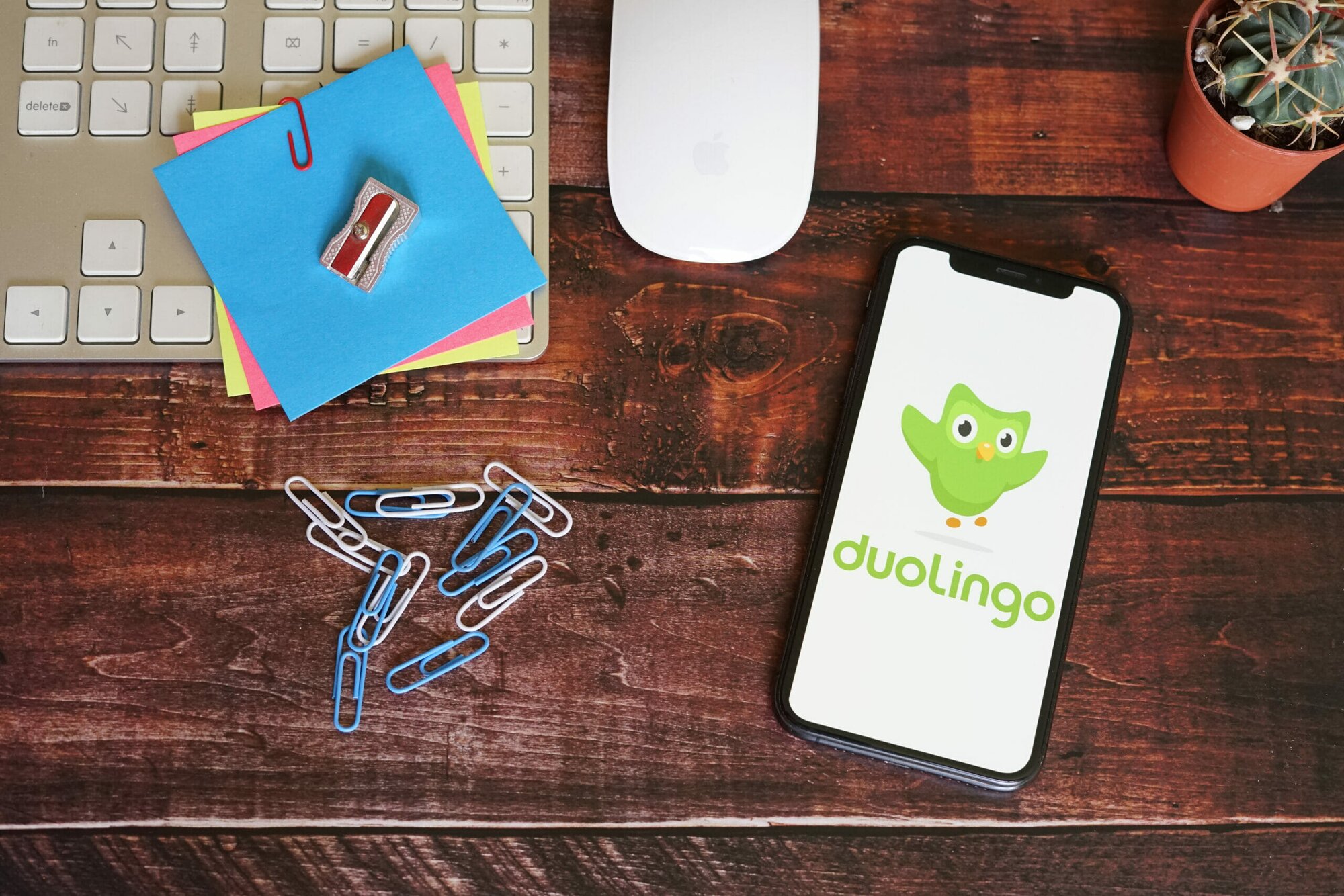What are the keys to creating innovative products for B2B customers? In his bestselling book, ‘The B2B Innovator’s Map – How to get from idea to your first ten customers’, Product Executive & Advisor Daniel Elizalde delves into all the implications every Product Leader needs to consider. Below, you can read Chapter 1 of his book. If you like what you read buy the full book to get a practical guide on how to navigate the B2B innovation journey.
Chapter One – Mapping the Innovation Journey
Early in my career, I built a great product that had no future in the market.
One of our biggest customers was a semiconductor company that had purchased several of our automated systems to test the functionality of their microcontrollers in the lab. The customer was pleased with our systems because they could easily create and execute new tests. But after using the system for some time, they realized they struggled to track all the tests they had created. My company wanted to explore if there was an opportunity for a new product here, so they assigned me to look into it. Little did I know I was in for a wild ride.
After several customer interactions, I pitched my leadership team the idea of developing a new application for managing the tests. They thought it was an excellent opportunity, so they gave me the green light to build this new product.
I wanted to be customer-driven, so I worked closely with our customer to define a solution that’d meet their needs. Finally, after a year of development, we deployed version one of our application. The product worked great, and our customer was delighted. This was a real success story. Or so I thought.
Enterprise software is not about solving one person’s—or even one organization’s—pain. Though we worked closely with one company, we didn’t validate if other companies had the same pain and if our solution would help them. When our sales team offered the product to other potential customers, the feedback was brutal. For some prospects, the solution was very niche and didn’t fit their needs. For others, that particular problem was not big enough to warrant an investment, or they were happy with their current solution. And yet others were not happy with their current solution, but the expense of migrating to a new solution was not worth the trouble.
Soon I realized the hard truth. There wouldn’t be a second customer.
Looking back at this story, it is very easy to see why my product failed. At the time, I didn’t have the necessary tools to understand the innovation journey, and therefore, I skipped several important steps. We thought we had built a hit product, but the reality is that we failed to do the work of understanding our customers and our target market.
If the prospect of building a failed product scares you, you are not alone. But don’t worry. Throughout this book, I’ll be by your side every step of the way to make sure this doesn’t happen to you. Before we begin mapping the innovation journey, I want to define what I mean by product innovation and the particular challenges you will face when building B2B digital products.
Product innovation is the process of creating new products that generate increased value for your customers and your company.
It’s not a destination but a journey with many twists and turns. Unfortunately, companies big and small waste a lot of time and money creating software products that don’t provide value to customers and, therefore, that nobody wants to buy. These failures are rarely about technology, people, funding, or partnerships. Instead, these failures result from a lack of customer-centricity.
A successful product needs to solve a pain that customers are willing to pay for while at the same time generating a significant return on investment. But many B2B companies short-circuit the innovation journey either because they believe they already know what the market wants or because they don’t have the skills and processes to be customer-centric throughout the development process.
In the next sections, I’ll walk you through the foundation for becoming customer-centric in the context of B2B, including how to:
- Understand enterprise customers
- Map the innovation journey
- Put it all together
Access further insights from Daniel Elizalde
- The Internet of Things – Daniel Elizalde on The Product Experience
- What is a Technical Product Manager, Anyway?
Understand enterprise customers
For Business-to-Consumer (B2C) products, the “customer” is simultaneously the person with the pain, the person who buys the product, and the person who uses it to solve their needs. Therefore, learning the needs of B2C customers is a relatively straightforward effort, since you only need to understand the needs of that one user.
Understanding enterprise customers is very hard. In fact, from my enterprise experience and from coaching dozens of product teams, I can definitively say that understanding enterprise customers is the number one challenge facing B2B innovation teams.
Understanding your enterprise customers means understanding their desired business outcome, as well as the people, processes, and tools involved in achieving that outcome.
The first step in understanding your enterprise customers is identifying the three categories of people involved in achieving a business outcome:
- Champion: person accountable for achieving a business outcome.
- Users: people internal or external to your customer’s organization who use your product as a tool to support the Champion’s business outcome.
- Buying Committee: people involved in evaluating and purchasing your product (e.g., the Champion, finance, IT, procurement, partners).
Enterprise sales and marketing teams use multiple names to refer to your customer’s business leader, the one who is accountable for achieving a business outcome. Some familiar names include Buyer, Executive Sponsor, Decision-Maker, and Champion. I prefer the term Champion because, in the early stages of the innovation journey, you need more than a Buyer or a Decision-Maker. You require somebody who will partner with you to champion your untested product, someone who will take a leap of faith that your application can solve their problem.
Although this person has the pain you could potentially solve, they might not be the ultimate decision-maker or might not have direct access to a budget to purchase your solution. Instead, the Champion knows how to navigate their organization, and they can get the support they need to bring your solution in-house.
Let’s look at an example that shows the complexity of understanding enterprise customers.
The Chief Operating Officer (COO) of a mid-size company is tasked with reducing the company’s travel expenses by 30 percent. As part of her initiative to achieve this business outcome, she decides to purchase an enterprise expense tracking solution. Achieving the business outcome will depend on many users across the organization using this expense tracking solution. Let’s break down all the people involved in our three categories:
Champion:
- COO: responsible for the business outcome of reducing travel expenses by 30 percent.
Users:
- COO: serves as both the Champion and a user of the solution.
- Employees: track expenses and reimbursements.
- HR manager: sets travel policies in the system.
- Line managers: approve expense reports.
- Directors and VPs: get roll-up reports of expenses for their area.
- Assistants: manage approvals and expense tracking for senior executives.
- IT manager: controls access and security.
- System integrator: develops integrations to other enterprise solutions.
Buying Committee:
- VP of IT: possesses budget and purchasing authority (i.e., buyer).
- Director of Compliance: reviews and approves service-level agreements (SLAs) and any other legal documents involved in purchasing the software.
- COO: acts as the Champion, a user, and part of the buying committee.
This example makes it easy to grasp the complexity of building enterprise software products. For your product to be successful, it needs to provide an effective way to support the workflows of all users, and all these workflows need to work together to support the desired business outcome of your Champion.
Enterprise software is complex because you have to balance the needs of your Champion, Users, and Buying Committee while maintaining internal alignment with your organization. Keeping all these pieces working together can feel like a balancing act, so you need a map to navigate the innovation journey. This map should help you leverage your company’s strategy, methodically gather insights from your customers, iterate on building a solution, and get sustained support from within your organization.
Let’s look in more detail at the six stages of the B2B Innovator’s Map to take your product from idea to your first ten customers.
A map of the innovation journey
For many companies, focusing on the innovation journey from idea to your first ten customers might sound like a tiny goal. But the reality is that most enterprise software products never get a single customer, let alone ten. If you can deliver value to your first ten customers, then you’ll be in a great position to move beyond the innovation journey towards scale.
To help you navigate the innovation journey from idea to your first ten customers, the B2B Innovator’s Map is organized into six distinct stages:
- Strategic Alignment
- Market Discovery
- User Discovery
- Solution Planning
- Prototyping
- Early Adopter
Some stages focus on getting customer insights while other stages focus on getting internal alignment within your company. Both areas are critical because to drive innovation, you need strong customer evidence and solid support from your organization.
The diagram below shows the six stages of the B2B Innovator’s Map, along with the criteria you need to meet to move between stages.
Notice that you can move both forward and backward on the journey, depending on the customer evidence you gathered in that stage. Expect to iterate, moving back and forth between stages, as you gather more customer evidence or realize that your assumptions were correct or incorrect.
For example, in the Strategic Alignment stage, your company might agree to explore a specific customer business outcome. But as you enter the Market Discovery stage and research potential markets for your product, you might discover that your customer’s pain in that market is not big enough to support a business.
In that case, you shouldn’t proceed to the User Discovery stage, because you already know your customer’s pains are not big enough. Instead, you might stay in the Market Discovery stage, looking for other markets to go after. Or you might go back to the Strategic Alignment stage and agree with your company on a different customer business outcome to explore.
With every iteration, you might advance one stage or move back one or more stages. And that’s OK. This method ensures you always focus on the most promising ideas and spend the least amount of effort and resources on ideas that will go nowhere. I know it is scary to talk to your leadership team about “moving backward.” But believe me, all successful products go through this flow. By taking a step back when your assumptions are incorrect, you won’t be slowing down. Instead, you’ll be gaining momentum and saving your company time and money by not chasing a rabbit hole that leads to failed products.
Going from idea to your first ten customers will take time and resources. Maybe you’ve heard stories about companies that run 100 experiments per week or teams that go from idea to prototype testing in a couple of days. I don’t doubt those stories are true, but they most likely come from the B2C world.
Enterprise solutions have different constraints and take much longer, so it is essential to set the right expectation with your stakeholders. For example, just getting access to the right people to interview might take several weeks. But the learnings you’ll get outweigh the risk and cost of using the same few weeks to build software based on gut feel.
Setting this expectation requires ongoing education and alignment across your company. The thought of spending weeks or months just testing an idea might be difficult to grasp for many people in your organization. You’ll get a lot of pushback from executives directing you to just “do something quickly,” to get this “innovation process” out of the way so that you can start building the actual product.
Pro Tip: The six stages of the B2B Innovator’s Map are an accelerator, not an obstacle. They will help you reduce risk, making it more likely that your product will find traction. Skipping any of these stages will result in an incomplete understanding of your customer, which results in poor product decisions. That road leads to products nobody wants, so don’t fall into that trap.
Below is a summary of the six stages. At every stage, you’ll learn something new about your customer, and you’ll continue to fine-tune your offering until you can deliver value to your first ten customers. In the following chapters, I deep-dive into each of these stages, arming you with all the frameworks, tools, and techniques you need to drive your new product forward.
Strategic alignment
In the Strategic Alignment stage, you’ll learn techniques for collaborating with your leadership team to effectively explore opportunities aligned with your company’s strategy and to agree on a particular customer’s business outcome to explore. Examples of business outcomes include helping your customer reduce their travel expenses, lowering their electricity bill, and tracking assets more efficiently.
Along with that agreement, you’ll define success metrics, secure resources, define your innovation team and Advisory Board, and agree on how to report progress throughout your innovation journey.
Market discovery
In the Market Discovery stage, you will explore the market opportunity for the customer’s business outcome you agreed to during the Strategic Alignment stage. You’ll learn techniques for narrowing down to a specific target market to go after, including industry, company size, geography, and use case.
In the Market Discovery stage, you’ll also research whether the target market you selected is big enough to support your new business. You’ll then spend time understanding the characteristics and pains of your Champion.
Selecting a target market does not guarantee you’ll find traction for your product; it only means you have narrowed down your universe of options. To understand if your idea has potential or not, you need to deep-dive into the challenges of your customer in this market. For example, you might discover that the pain in that market is not big enough to demand a new solution or that there aren’t enough companies experiencing the pain to support your business. At that point, you can agree with your company to look into a different market or go back to the Strategic Alignment stage to agree on another customer’s business outcome to explore.
User discovery
You selected a target market and identified your customer’s pain in the Market Discovery stage. This information is critical for defining a product roadmap, but it is not enough. Now you need to understand the pains and workflows of all the people within your customer’s organization who will use your solution and whose collective output will resolve the Champion’s pain. I call all these different users your User Ecosystem.
In the User Discovery stage, you will learn a framework to identify, research, and prioritize your User Ecosystem throughout the enterprise customer journey, from sales to installation, deployment, operations, and more.
Solution planning
Stages one, two, and three of the journey focus on understanding the problem to solve, the market, and the people who experience that problem. Stages four, five, and six focus on incrementally testing and developing your solution to address that problem.
The goal of the Solution Planning stage is to plan for the work ahead. This is the time to discuss how you and your team will approach testing and building a solution to solve your Champion’s pain.
By planning, I don’t mean the Waterfall way of planning. Instead, during this stage, you will:
- Prioritize the users to focus on first;
- Create a Solution Diagram to get alignment on what you plan to build; and
- Create an experiment roadmap to test with your prospects during the Prototyping stage and to test with your first ten pilot customers during the Early Adopter stage.
This stage also helps you align with your leadership team on your next steps and agree on the support you will need moving forward, including people, funds, equipment, and vendors.
Prototyping
The Prototyping stage focuses on building prototypes to test with prospects in your target market. In other words, it’s about experimenting and getting real-world evidence on whether your solution can solve your customer’s pain.
With every experiment you make, you’ll gain new customer insights to incorporate into a new iteration of your solution. These insights allow your solution to move from sketches to low-fidelity prototypes to high-fidelity prototypes until you finally get your first paid customer and deliver a working prototype.
Experimentation applies to every component in your offering, including your technical solution, monetization model, services, and partnerships. In the Prototyping stage, you’ll learn tools and techniques to test your assumptions across three dimensions:
- Desirability: does your target market want your offering?
- Viability: can you make money with your offering?
- Feasibility: can your company build and operate the resulting solution?
Early adopter
Getting your first paid customer is a huge milestone. It means that at least one Champion sees your solution’s potential, and they believe you can provide value. But you haven’t demonstrated that value yet. In the Early Adopter stage, you’ll work closely with your first ten customers to ensure you can deliver value.
Your goals during the Early Adopter stage are:
- Demonstrate (in the field) that your solution can solve your customer’s pain.
- Continue testing for desirability, feasibility, and viability as you learn what it takes to deploy and operate your product.
During this stage, you’ll put together all the tools, skills, and insights you’ve gathered from previous stages and work closely with your first pilot customers to deliver value. You will also start testing your assumptions throughout the enterprise customer journey and fine-tuning your product’s features to deliver on your promise.
The learnings you’ll get from your first customer will be invaluable, but they are not enough for you to know if your offering has potential in your target market. To get more confidence that you genuinely know your customers and that you can solve their problems, you need to deliver the same value to ten customers.
Your role as an innovator is to reduce the risk of launching new products into the market. Therefore, to manage that risk, you must focus on concrete milestones you can measure, such as providing value to your first ten customers. Abstract milestones, like product-market fit, are not useful because they’re subjective. It is very difficult to plan, measure, and execute towards a product-market fit milestone.
On the other hand, setting a concrete milestone, such as providing value to your first ten customers, enables you to communicate a clear picture of the innovation journey to the rest of your organization. With a clear goal in mind, now everybody can understand what the goal is and how much progress you are making toward it.
Furthermore, in the world of enterprise software, every customer can be very different from each other, even if they belong to the same target market. For example, your enterprise customers might have different organizational structures, legacy systems to integrate with, distinct compliance requirements, etc.
By the time you deliver your tenth pilot project, you will feel confident that you’ve seen most of the variations you will encounter in that market. You’ll start seeing the same patterns and the same type of challenges from your Champions and User Ecosystem.
Delivering value to your first ten customers doesn’t mean you are ready to scale. It only means that you have an excellent understanding of your customer, and you know you can deliver value to this target market. Ten customers serve as a concrete milestone to start discussions with your leadership team on what the next step for your new product should be. Making these decisions before delivering value to ten customers is premature and often leads to failure.
Put it all together
To illustrate how the six stages of the B2B Innovator’s Map work together, let me expand on the example I mentioned earlier about managing travel expenses.
Julie was a director of technology for a company developing accounting software for mid-to-large corporations. Her leadership team wanted to expand their product portfolio, so they assigned Julie to lead this innovation effort. Julie had been here before. In the past, the company invested heavily in several initiatives that went nowhere. Those projects were based on internal assumptions, and their focus was to build something fast to beat the competition. Julie knew she had to do things differently, so she worked with her team to guide her company from their idea to their first ten customers.
During the Strategic Alignment stage, Julie worked with her leadership team to agree on the business outcome they wanted to solve for their customers. Based on market data and other insights, Julie’s leadership team believed there was an opportunity to expand their portfolio into the “expense tracking” business. Although this wasn’t very specific, it was enough for Julie to move to the Market Discovery stage and start exploring the pains around expense tracking and who could benefit from such a solution.
During the Market Discovery stage, Julie and her team worked to identify the target market they should go after. Her leadership team had a hunch that large corporations have more expenses to track and would, therefore, be excellent targets for a new product. Julie talked to several people in Fortune 500 companies who could be potential targets (i.e., her Champions). She discovered that, although these people had pain around expenses, they already had enterprise systems to handle their needs. In all her conversations, she couldn’t find a real opportunity for a new product.
Julie went back to the drawing board and, after more research, discovered that smaller companies didn’t have expense tracking systems. Therefore, they would be a better target. Julie talked to several people in these smaller companies and verified there was an opportunity there. She learned that her Champion is usually the COO tasked with reducing company expenses. She also discovered that, from all possible expenses to track, travel expenses were the most troublesome ones. Now, Julie had good evidence of a potential target market, potential Champions, and a few specific pains to solve. Julie had to convince her leadership team that the opportunity was with smaller companies and not with large corporations. Since she had objective customer evidence, she was able to make her case. Now, with her leadership team behind her, Julie moved forward to the User Discovery stage.
During the User Discovery stage, Julie and her team talked to Champions from many small companies to understand who else would be involved in the process of tracking travel expenses. Julie learned there were three categories of users: expense report creators, approvers, and system administrators. Julie scheduled interviews with people from all of these groups, and she was able to get a clear picture of the many workflows that her product would need to support. With this information, Julie was ready to advance to the Solution Planning stage.
During the Solution Planning stage, Julie and her team sketched out the various components their application would need to support all the customer workflows she identified. While defining their Solution Diagram, her team noticed some significant gaps in their user understanding, so they decided to go back to the User Discovery stage for a couple of weeks to gather the missing info.
Once the Solution Diagram was complete, they realized their solution needed to support many users and many scenarios. The next step was to prioritize where to begin. Julie decided to narrow the scope. During her conversations with Champions from multiple companies, she learned that the most critical travel expenses to track were from the sales team, so she decided to focus on solving for the sales team first, which limited the scope to just a couple of user types and a couple of workflows. That scope was enough to test out whether their solution could deliver value to their customers.
During the Prototyping stage, Julie and her team tested their proposed solution by showing their Champion and potential users click-through prototypes. She also used these prototypes to showcase her progress internally, enabling her leadership team to visualize what this product could be. Julie’s team iterated through many prototypes, incorporating customer feedback, keeping the ideas that worked, and discarding those that didn’t.
As the team gathered more evidence that their solution was gaining traction, they moved on from click-through prototypes and started building their prototypes in actual software. With every customer feedback iteration, their software gained functionality, and at some point, it was robust enough that one Champion offered to buy it. Julie had secured their first pilot customer! With this early win, Julie secured the backing of her leadership team to move into the Early Adopter stage.
During the Early Adopter stage, Julie’s team deployed their solution for the first time and worked tirelessly to ensure their product delivered the value it promised to their Champion. At the same time, Julie worked with her Business Development team to secure additional pilot customers.
After a few months, Julie and her team had confirmed ten pilot customers, and they had iterated enough on the early issues that they were consistently delivering value to all their customers. Julie had taken her company from idea to their first ten successful customers! In the process, she had saved the company a lot of time and money because she minimized the risk of building a product nobody wanted. Thanks to all of her efforts, Julie opened a new line of revenue for the company and gained the trust of her leadership team to continue investing in new products. Julie continued leading all new product initiatives, now in her new role as Vice President of Product Innovation.
I wrote this story to illustrate a “happy path” where Julie’s journey is almost seamless across the innovation journey. But as you know, a “happy path” doesn’t exist in the real world. As you start your own innovation journey, keep in mind that you’ll need to make many course corrections and iterate multiple times on each of these stages. Also, know that most companies never make it to the Early Adopter or even the Prototyping stage. But even if your company only makes it to the first stage (Strategic Alignment) and decides to abandon your project, that is still a big win!
Most companies skip all these stages and try to go from idea to scale, often resulting in time and money wasted. If you can gather real-world insights and quickly iterate between stages, you’ll not only be saving your company time and money, but you’ll also be increasing your chances of success.
In Julie’s story, I only focused on the flow and the outputs of each of the stages. So if you feel like you are missing the “how” in this story, don’t worry. I have you covered. In the following chapters, I’ll give you a deep dive into each stage and share with you all the tools, frameworks, and techniques you need to succeed.
By writing this book, I’m hoping my experience catches you at a point in your journey where you can use these learnings to identify shortcomings in your current strategy and navigate the innovation journey toward a successful, customer-centric product. I’m rooting for you!
Access further insights!
The B2B Innovator’s Map: How to Get from Idea to Your First Ten Customers is your practical guide to taming uncertainty and discovering opportunities to develop products your customers will be eager to buy. Find out more about what buyers of this book had to say here.
About the author, Daniel Elizalde
Daniel Elizalde is a Product Executive with over 20 years of experience leveraging emerging technologies to drive product innovation in industries such as climate tech, eCommerce, manufacturing, telecommunications, automotive, and semiconductors.
Daniel has held various leadership positions, including VP, Head of IoT at Ericsson, Head of Products at Stem (AI-powered energy storage company in Silicon Valley), and Instructor at Stanford University.
As a Product Innovation Coach, Daniel has trained and advised over 1,500 product professionals around the world on how to take their ideas to market. Daniel is also a mentor at Greentown Labs, the largest climate tech accelerator in the US, helping startups address some of the world’s most pressing challenges.








